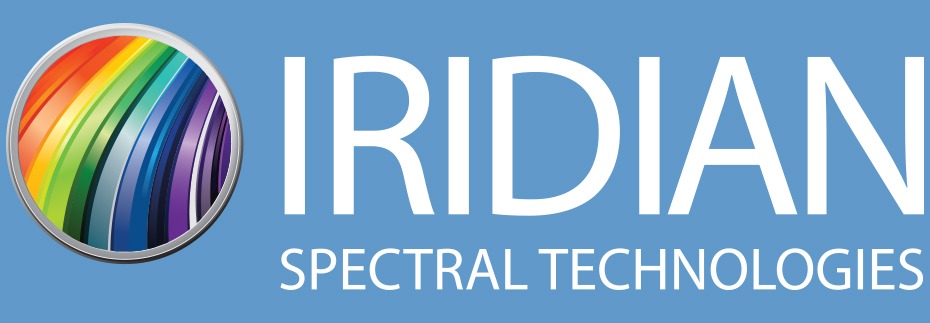IR sensing technology harnesses the power of infrared radiations – which are invisible to the human eye – for various scientific and industrial applications. It leverages specially designed IR sensors and filters to detect energy levels and monitor changes in the surrounding environment. The utility of IR sensing spans thermal imaging, environmental monitoring, industrial process control, remote sensing, and even medical diagnostics.
Challenges of IR Sensing
IR sensing technology has its complexities. As the power of IR sensing depends on accurately detecting emission lines and excluding unwanted spectral lines, the choice and performance of detection filters become pivotal. Achieving high performance in real-world conditions requires a sophisticated understanding of critical parameters like cut-off wavelength, angle of incidence, and absorption lines.
Types of Filters Used in IR Sensing
Bandpass Filters
Bandpass filters only allow a specific range of wavelengths to pass through, blocking the rest. This selectivity is highly beneficial for isolating specific emission lines or bright lines in an IR LED or other sources of infrared radiation.
Edge Pass Filters
Edge filters, including longpass and shortpass filters, allow wavelengths either above (longpass) or below (shortpass) a specific cut-off point to pass. These are frequently used to remove unwanted IR energy at particular wavelengths, thus enhancing the signal-to-noise ratio.
Longpass Filters
Longpass filters, a type of edge filter, transmit all wavelengths longer than their cut-off point. This trait enables them to isolate longer wavelengths from the IR spectrum, thereby improving the clarity of the sensed signal.
Shortpass Filters
In contrast, shortpass filters let through all wavelengths shorter than their cut-off point. These filters prove instrumental in applications requiring short infrared wavelengths for optimal sensing.
Interference Filters
Interference filters selectively transmit specific wavelengths by exploiting the interference of light waves. They provide high selectivity and are often used to isolate specific emission lines from the background in IR sensing.
Use of Filters in Optimizing Detection of Spectral Emission Lines
A critical role for filters in IR sensing revolves around optimizing the detection of spectral emission lines. In this context, bandpass filters specific to SWIR (Short-Wave Infrared), MWIR (Mid-Wave Infrared), and LWIR (Long-Wave Infrared) come into play. Their primary function is to selectively allow desired IR wavelengths to reach the detector while rejecting unwanted ambient light, thus reducing the overall system’s noise and improving the signal-to-noise ratio.
One significant advantage of MWIR filters is their ability to enhance the signal-to-noise ratio in MWIR imaging, a critical aspect of remote sensing applications, thermal imaging, and industrial process monitoring. For this reason, MWIR filters often see application in imaging or detection systems to improve the signal-to-noise ratio.
Filters for Remote Sensing and Environmental Monitoring
Remote sensing and environmental monitoring applications often require filters that can aid in detecting gas species such as H2O, CO2, CH4, and CO. These gases’ emission and absorption lines occur in specific wavelength regions within the IR spectrum. Appropriately designed filters can pass these wavelengths and block others, enabling the detection and measurement of these gases in the atmosphere.
Factors Affecting Filter Performance
Various factors can affect the performance of filters used in IR sensing. These include the cut-off wavelength, the angle of incidence, energy levels and states, and absorption lines.
Cut-off Wavelength
The cut-off wavelength for longpass and shortpass filters defines the boundary between the transmitted and blocked spectral regions. This boundary is crucial as it determines the spectrum of infrared radiation that the filter allows to pass.
Angle of Incidence
The angle of incidence can also impact filter performance, especially in bandpass and edge filters. An increased angle of incidence may shift the passband toward shorter wavelengths, affecting the filter’s ability to pass or block certain IR wavelengths.
Absorption Lines
The absorption lines of the molecules can influence the performance of the filter. Different molecules have unique absorption lines that can be used to identify and quantify them. However, overlapping absorption lines from different molecules can lead to erroneous detections, making the filter design a critical consideration.
IR sensing is a critical technology in various applications, from remote sensing to industrial process control, and various filters – such as bandpass, edge pass, longpass, and shortpass filters – play a vital role in successfully implementing these applications. Each filter type offers unique advantages in controlling the IR wavelengths that reach the detector, enhancing the overall system’s performance.
Need Help with IR Sensing?
If you need assistance with IR sensing applications, don’t hesitate to contact a member of the Iridian Spectral Technologies team. Our dedicated team specializes in creating custom-made SWIR, MWIR, and LWIR bandpass filters designed to meet your specific needs. We use an energetic sputtering process to produce thin film dielectric filters that boast high transmittance levels, robustness, and environmental stability. Contact us today for your custom quote, and let us help optimize your IR sensing applications.
